Caretaker of Gettysburg’s Evergreen Cemetery
At the time of the Battle of Gettysburg, Elizabeth Thorn was caretaker of Evergreen Cemetery, a job normally performed by her husband Peter but he was away serving in the Union Army. Her elderly parents and her three small sons were living with her in the cemetery gatehouse, and she was six months pregnant. The cemetery grounds were littered with dead soldiers and horses, and it was her responsibility to bury them.
 Image: Elizabeth Thorn Monument
Image: Elizabeth Thorn Monument
This 7-foot bronze statue created by sculptor Ron Tunison of Cairo, New York, depicts a weary Elizabeth Thorn, leaning on a shovel as she rests from her work. The memorial was dedicated in November 2002 and honors the contributions of all women who served before, during and after the Battle of Gettysburg.
Peter and Elizabeth Thorn emigrated from Germany and were married on September 1, 1855, the same day the cornerstone was laid for the Evergreen Cemetery gatehouse. The Thorns were the first family to live in the gatehouse when Peter was hired as the first caretaker of the 30-acre Evergreen Cemetery in Gettysburg, Pennsylvania, on February 9, 1856. There are 13,000 burial plots, 300 of which are from the Civil War.
On August 16, 1862 Peter Thorn enlisted in the 138th Pennsylvania Infantry, leaving the care of the cemetery to his German-born wife Elizabeth, age 30. She also had the responsibility of caring for their three sons and her elderly parents.
The cemetery gatehouse was home to the Thorns. Each side of the stone and brick structure had a cellar, where the fireplaces were located, and there were two rooms above. The north gatehouse was built with a first-floor living room and an upstairs bedroom, which was Elizabeth Thorn’s room.
Battle of Gettysburg
At the time of the Battle of Gettysburg in July 1863, Elizabeth was pregnant. Peter was serving with the 138th Pennsylvania which was at Harpers Ferry and Washington, DC during the Gettysburg Campaign. Her parents, age 63, and her three sons, age 7, 5, and 2, were living with her in the cemetery gatehouse.
By the summer of 1863, the cemetery had become well established, and the height on which it was located had become known as Cemetery Hill. During the Battle of Gettysburg, it served as a major position of the Union Army of the Potomac.
On July 1, Elizabeth Thorn rode with Union General Oliver O. Howard along the lines on the evening of July 1st, pointing out to him the main roads radiating from Gettysburg.
So at last they came to the Cemetery House and wanted a man to go along out with them (a young boy was there about thirteen years, and I thought he was too young, and my father was too old) I offered myself to go along. He refused at first, but I thought there was danger all around, and said I wasn’t afraid so he said ‘Come on.’
I showed him the Harrisburg Road, the York Pike, and the Hunterstown Road. It was with one of General Howard’s men that I went. Then he took me back home. He said, ‘They will commence very heavy firing now, walk on the other side of my horse.’ And so as soon as I jumped on our porch he went back again.
By her account, she also served supper to three Union corps commanders – Howard, Henry Slocum, and Daniel Sickles:
Soon one of General Howard’s men came and ordered me to have supper for General Howard. I complained I had no bread, for I had given it all away in the morning. But I said I could make cakes, and he said they were good enough for war times.
They did not come for so long, it was near twelve o’clock. The house was so full of soldiers that the boys had to lay on the floor in the kitchen, on feather beds. And as they saw the children lying there, they said it was very sad.
About four o’clock we went to the cellar. There were seventeen of us [other civilians]… We were in the cellar about two or three hours. The noise of the cannonading was terrible. At last the door flew open and someone said: ‘This family is commanded by General Howard to leave this house and get as far in ten minutes as possible. Take nothing up but the children and go.’
After three days of horrific battle, the armies moved on. Evergreen Cemetery and its gatehouse suffered damage from artillery shells and the thousands of men and horses who tramped through it during and after the fighting.
Under the broiling sun, hundreds of corpses lay strewn about the fields of Gettysburg. The subsequent days and nights were filled with the screams and mutterings of thirsty, dying men on the battlefield.
The smell of decaying flesh permeated the air. The citizens wrapped rags around their faces, and some smeared camphor ointment beneath their nostrils, trying to mask the putrid smell.
Elizabeth wrote:
We were down the country four days and the fifth (July 7) we went home. On the way home, we met Mr. McConaughy. He was the president of the Cemetery at that time and he said to me: ‘Hurry on home, there is more work for you than you are able to do.’ So we hurried on home. When we looked at the house I could only say ‘O my!’
There were no window glass in the whole house. Some of the frames were knocked beside the pump shed. I went to the cellar to look for the good things I had put there on the first night. One chest was packed with good German linen, others packed with other good things—everything was gone, but three featherbeds and they were full of blood and mud.
After I had dragged them out of the cellar I asked an officer who was riding by, if I would ever get any pay for things spoiled like this. He asked me what it was, and I told him bed clothes that were in the cellar, and he said in a very short way: ‘No!’ So as soon as the pump was fixed I sent for three women and we washed for four days before we got them clean.
The cemetery was littered with bodies of dead men and horses. After seeing the bodies, the president of the cemetery, attorney David McConaughy, ordered Elizabeth to bury them. He picked a plot that faced East Cemetery and Culp’s Hills, the rockiest soil in the cemetery.
Then I got a note from the president of the Cemetery, and he said: ‘Mrs. Thorn, it is made out that we will bury the soldiers in our Cemetery for a while, so you go for that piece of ground and commence sticking off lots and graves as fast as you can make them.’
The mother of three, and six months pregnant, buried 105 soldiers in the July heat. She dug the shallow graves in the rocky ground, assisted at times by her aged parents. Men from the town offered to help, but they could not tolerate the foul smell.
Well, you may know how I felt, my husband in the army, my father an aged man. Yet for all the foul air we two started in. I stuck off the graves and while my father finished one, I had another one started. This lasted for days, until the boys sent word, if I couldn’t get help at all I should telegraph to some of my friends to come and help me.
Two came, but one only stayed two days, then got deathly sick and left. The other stayed five days, then he went away very sick, and I had to pay their fare here and very good wages for their work. By that time we had forty graves done. And then father and I had to dig on harder again.
[We] kept on burying the soldiers until they had the National Cemetery ready, and in that time we buried one hundred five soldiers. In front of this house there were fifteen dead horses and beside the Cemetery there were nineteen in that field. So you may know it was only excitement that helped me to do all the work, with all that stench.
The baby Elizabeth was expecting in July 1863 was named Rose Meade, but she was never healthy and died at the age of 14.
And in three months after I had a dear little baby. But it was not very strong, and from that time on my health failed and for years I was a very sickly woman. In my older days my health has been better, but those hard days have always told on my life.
In the ensuing months, David McConaughy led efforts to purchase portions of Cemetery Hill for a Federal cemetery, where most of the dead Union soldiers (except those buried by Mrs. Thorn in the civilian graveyard) could be reinterred.
In November 1863, President Abraham Lincoln spoke at the dedication ceremony for the new National Cemetery, delivering the Gettysburg Address from a platform constructed in Evergreen Cemetery.
Elizabeth Thorn continued to run the cemetery until 1865, when her husband returned, after witnessing the surrender of General Robert E. Lee‘s troops at Appomattox. The family stayed at Evergreen Cemetery until 1874. Her post-war reminiscence, written in 1905, is one of the best known civilian accounts of the Battle of Gettysburg.
Peter and Elizabeth Masser Thorn both died in 1907 and are buried at Evergreen Cemetery. Their adjoining graves are approximately 200 yards from the gatehouse.
SOURCES
Elizabeth Thorn
Elizabeth Thorn – The Angel of Gettysburg
Battle of Gettysburg: Elizabeth Masser Thorn
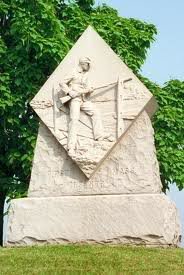

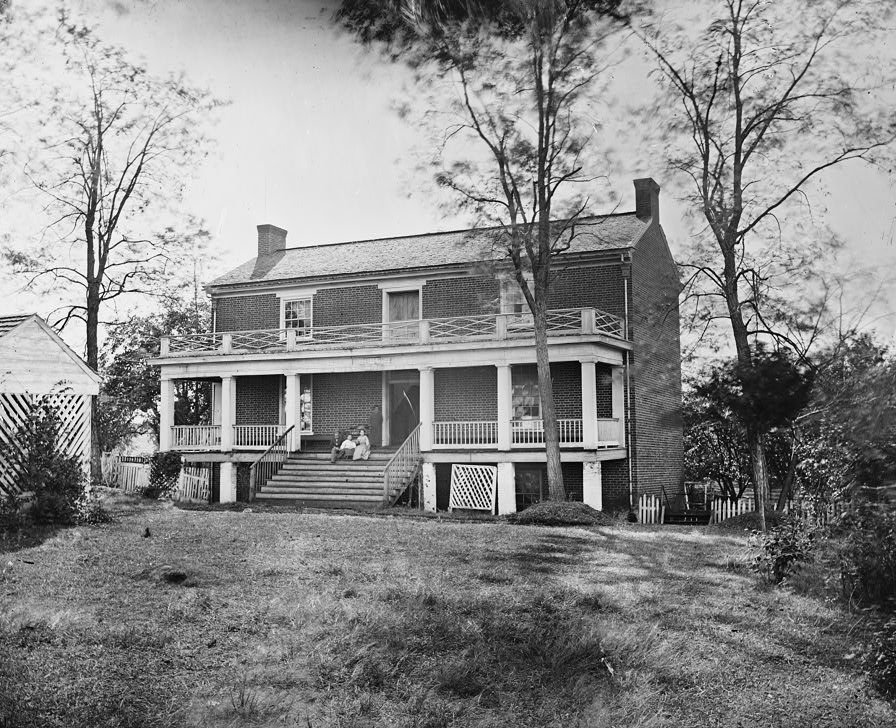
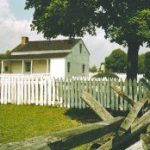
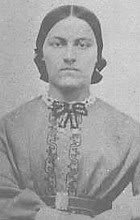
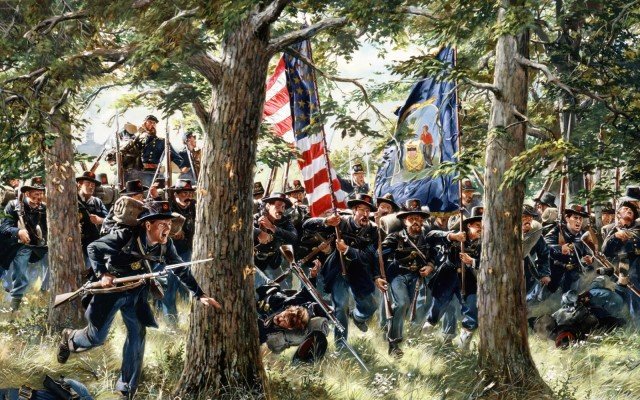
Loved reading this! It really put me there, as I read her words and felt her emotions through them. She was a strong woman and I admire her. My maiden name is Thorn. I would love to know if she and her husband are distant relatives. What a wonderful story that would be. What a wonderful woman she was. Thank you Elizabeth for your bravery and kind heart.